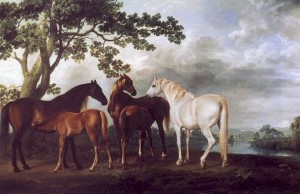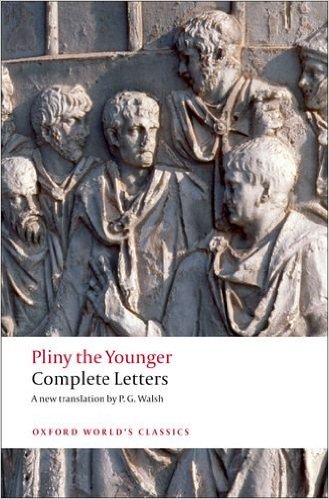
A realistic depiction of some horses set in a country landscape by the 18th century English painter George Stubbs. The Painting is entitled Mares and Foals in a Landscape and dates from 1763-68.
This week I had planned to treat my readers to a post, entitled In Defense of King Candaules, about a king who was murdered in the aftermath of arranging for his trusted bodyguard to peep on the queen disrobing in his royal bedchamber. I am disappointed to report, however, that this post will have to be delayed owing to a fairly elaborate set of circumstances. My emergency replacement anecdote for today concerns an unnamed painter who couldn’t quite get the details right on a painting of a horse returning from its exercise. This is the anecdote as it is recounted by Valerius Maximus [1]:
An artist of exceptional talent had devoted a lot of work to depicting a horse that was coming back from its exercise. The painting almost looked alive. He wanted to add the foam coming from the horse’s nostrils, but this great artist was completely worn out and frustrated for a long time by this tiny task. He was burning with indignation, so he took a sponge that happened to be there beside him, soaked with all his colors, and threw it at the painting, wanting to destroy the entire work. Fortune made him aim the sponge at the horse’s nostrils, so it carried out the painter’s wishes. In this way, art did not have the power to depict something, but change imitated it successfully.
While Maximus does not go so far as to name the painter, I vaguely recall having read a version of the story someplace or another in which the painter was named. What the name was, I have no idea. If you are reading this post have any knowledge pertaining to the name of the painter in question, do not hesitate to leave a comment straightway.
Addendum (24 October 2015)
A special thanks to Mikael Onsjö for identifying the mystery painter as either Apelles (see Wikipedia) or possibly Nealkes (see The elder Pliny’s chapters on the history of art).
References
[1] Valerius Maximus: Memorable Deeds and Sayings: One Thousand Tales from Ancient Rome, translated by Henry John Walker, Book 8, Chapter 11, Section 11 ext. 7 (2004).

